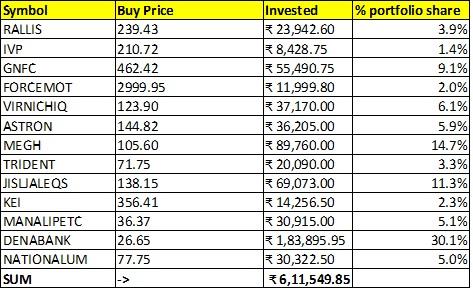Table of Contents
- Understanding the Basics of Domain Flipping for Profit
- Identifying Valuable Domains: Key Factors to Consider
- Crafting Your Sales Strategy to Maximize Earnings
- Navigating Market Trends to Optimize Your Domain Investments
- Building a Long-Term Portfolio: Best Practices for Success
- Q&A
- To Wrap It Up


Understanding the Basics of Domain Flipping for Profit
Domain flipping is an intriguing and potentially lucrative venture where individuals buy domain names—registered web addresses—with the intention of selling them at a higher price. This practice can yield impressive returns if approached with the right strategies and a keen understanding of market trends. It begins with identifying valuable domain names that can attract future website owners, businesses, or brands looking to establish their online presence.
One of the key considerations in domain flipping is selecting the right domains. The ideal domain name should be:
- Short and memorable: Easy to spell and pronounce increases its appeal.
- Descriptive and relevant: Should reflect a specific niche or industry.
- SEO-friendly: Incorporating keywords can boost visibility in search engines.
These attributes help domains retain their value over time. Additionally, investing in domains with established traffic or backlinks can further enhance their attractiveness to potential buyers.
Establishing a selling strategy is equally important in maximizing profits. It involves:
- Researching market trends: Staying updated on popular keywords and market demands.
- Pricing competitively: Assessing similar domain sales can provide valuable insight into pricing strategies.
- Utilizing sales platforms: Listing domains on well-known marketplaces like GoDaddy Auctions or Sedo can increase visibility.
For a more efficient approach, consider creating a table that outlines the essential steps in domain flipping:
| Step | Description |
|---|---|
| Research Domains | Identify potential domain names based on trends and keywords. |
| Purchase | Buy domains that have growth potential or that are currently undervalued. |
| Resell | List the domains on a marketplace with attractive descriptions and images. |
Identifying Valuable Domains: Key Factors to Consider
When diving into the world of domain flipping, recognizing the elements that make a domain valuable is crucial for maximizing profits. One of the primary factors is keyword relevance. Domains that incorporate popular keywords can attract significant traffic, enhancing their desirability. Investigate search volume data using tools like Google Keyword Planner to identify which keywords are in demand. A domain that resonates with a trending niche not only garners interest but can also appreciate in value over time.
Another essential aspect to consider is the domain extension. While .com domains are often seen as the gold standard due to familiarity and trust, there are profitable opportunities in other extensions like .net, .org, or even newer ones like .io or .tech. Focus on extensions that align with the target market or industry where the domain will reside. Furthermore, assess how the extension may influence search engine ranking and user perception.
Lastly, check the history and age of the domain. Older domains can carry established authority and backlinks, which are vital for SEO performance. Use tools like Ahrefs or Wayback Machine to look up a domain’s history and backlink profile. A clean history free of penalties and a domain age of several years can significantly bolster its value. Remember that transparency in the domain’s past can build trust with potential buyers or users, further enhancing its marketability.


Crafting Your Sales Strategy to Maximize Earnings
Developing a successful sales strategy in the domain flipping market is crucial for maximizing earnings. To begin, identifying lucrative domains is key. Focus on keywords that are trending, geographic relevance, and extensions that have shown consistent demand. Utilize tools like Google Trends and domain marketplaces to analyze market behaviors. Pay attention to the following factors:
- Keyword Relevance: Choose domains that resonate with popular search terms.
- Brandability: Aim for names that are catchy and memorable.
- Length: Shorter domains are often more desirable and easier to brand.
Once you’ve secured valuable domains, the next step involves positioning them strategically in the marketplace. This includes setting a price point that reflects both the market value and your investment. Proper valuation can often be the difference between a quick sale and prolonged ownership. Consider these aspects:
- Comparable Sales: Research recent sales of similar domains to gauge pricing.
- Marketplaces: List your domains on multiple platforms for broader exposure.
- Sales Strategy: Choose between park-and-hold, auction listings, or direct sales depending on your target audience.
Lastly, maximizing visibility and outreach is vital for promoting your domains. Engage with online communities, leverage social media platforms, and utilize SEO techniques tailored for domain sales. Here’s how to enhance your outreach:
- Networking: Connect with potential buyers in forums and social media groups.
- Content Marketing: Create blogs or videos discussing the value of specific domains.
- Email Campaigns: Target potential buyers and businesses directly through well-crafted email presentations.
To visualize your potential earnings based on different factors, refer to the table below:
| Domain Type | Average Sale Price | Potential Annual Earnings |
|---|---|---|
| Keyword-Rich | $1,500 | $18,000 |
| Brandable | $2,000 | $24,000 |
| Short Domains | $5,000 | $60,000 |


Navigating Market Trends to Optimize Your Domain Investments
Understanding and adapting to market trends is crucial for anyone looking to succeed in domain flipping. To make informed decisions, start by monitoring industry news and updates related to domain valuation and emerging technologies. Consider subscribing to reputable tech blogs, attending webinars, and following influential figures in the domain investment space on social media. Here are some key areas to keep an eye on:
- Trends in popular keywords and phrases
- New gTLD launches and their reception
- Changes in consumer behavior and online usage patterns
Once you’ve identified potential opportunities, it’s essential to analyze domain sales data. Websites like DNJournal provide insights into recent transactions, revealing which domains are fetching top dollar and why. Gathering data on attributes like domain length, keyword popularity, and extension can help you pinpoint lucrative investments. For example, utilize the following table to summarize various extensions and their market performance:
| Domain Extension | Average Sale Price | Market Popularity |
|---|---|---|
| .com | $2,000 | High |
| .net | $1,000 | Medium |
| .io | $1,500 | Growing |
don’t underestimate the power of branding in your investments. Assessing the potential of a domain involves not only its market trends but also its ability to resonate with a target audience. Seek out domains that are easy to remember, have a clear connection to a niche market, and support a compelling brand story. By doing so, you position yourself to optimize your purchases for a higher return on investment when flipping domains.


Building a Long-Term Portfolio: Best Practices for Success
When diving into domain flipping, establishing a long-term portfolio is key for sustainable success. Start by researching market trends to identify which keywords and niches are gaining traction. Consider focusing on short, memorable domains that reflect popular keywords or phrases. This strategy enhances the potential for resale value. Additionally, tools like Google Trends or Ahrefs can provide insights into trending topics, assisting you in making informed purchasing decisions. Aim to create a balanced mix of domains across different categories to minimize risk.
An essential aspect of building your portfolio is maintaining diversity. This can involve:
- Buying various extensions: Look beyond the familiar .com to include .co, .net, and country-specific domains.
- Investing in multiple niches: Spread your investments over various industries to capture different segments of buyers.
- Acquiring premium names: While these might require more capital upfront, their resale potential can substantially outweigh initial investment costs.
Once your domains are acquired, their management is crucial. Utilize a tracking spreadsheet to monitor key metrics such as purchase price, estimated market value, and renewal dates. This helps in planning your sales strategy effectively. Additionally, consider implementing SEO strategies on your domains by developing simple landing pages that are informative and include relevant content, ensuring they are visible to potential buyers. Over time, nurturing your portfolio this way can lead to impressive returns and make your domain-flipping venture not just profitable, but sustainable.
Q&A
Q&A: Domain Flipping to Make Money Online
Q1: What is domain flipping? A: Domain flipping is the process of purchasing internet domain names at a relatively low price, then selling them at a higher price for profit. It’s similar to real estate investing but in the online space, where the aim is to identify valuable domain names that others are willing to pay for.Q2: How do I find good domains to flip? A: Finding good domains involves researching names that are short, memorable, and relevant. Use tools like domain name generators and keyword research tools to identify trending keywords. Checking expiration lists or domain auctions can also uncover potential gems that are readily available for purchase.
Q3: What factors contribute to a domain’s value? A: A domain’s value can be influenced by various factors, including length (shorter is often better), keyword relevance (domains with in-demand keywords are typically more valuable), extension (.com is preferred), and brand familiarity. Additionally, having a history of traffic or existing backlinks can boost its desirability.
Q4: Should I use a domain registrar or an auction site to sell domains? A: Both options have their merits! Domain registrars like GoDaddy and Namecheap allow you to sell domains directly, while auction sites like Flippa or Sedo give you exposure to a broader audience. If you choose to use an auction site, ensure to craft a compelling listing to attract potential buyers.
Q5: What are the risks associated with domain flipping? A: As with any investment, there are risks involved in domain flipping, including the potential for loss if the domain doesn’t sell for a profit. Market demand can fluctuate, and new trends can emerge, which may render certain domains less valuable. Additionally, there’s the possibility of paying registration fees without making a sale.
Q6: How can I increase my chances of selling a domain? A: To improve your likelihood of making a sale, focus on branding. Create an appealing website or landing page for the domain and optimize it for search engines. Utilize social media and online marketplaces to promote your domains. Networking with other domain investors can also be beneficial for sharing insights and potential buyers.
Q7: Is domain flipping a viable full-time career? A: For some, domain flipping can turn into a profitable full-time venture, but success requires dedication, research, and a keen understanding of market trends. Many flippers treat it as a side income while developing their skills and portfolio before diving in entirely. The key is to stay adaptable and continually educate yourself about the industry.
Q8: What resources can I use to get started with domain flipping? A: There are numerous resources available to help you kickstart your domain flipping journey. Consider online courses that focus on digital marketing, branding, and e-commerce. Forums like NamePros or communities on Reddit can provide valuable insights from experienced domain flippers. Books on online entrepreneurship and market trends can also enhance your understanding.
Q9: Can I flip domains without any prior experience? A: Yes, you can begin flipping domains without prior experience! It’s essential to do your research and be willing to learn. Many successful domain flippers started from scratch by studying the market, experimenting with different strategies, and seeking advice from seasoned professionals.
Buying and selling domain names can be an exciting and potentially lucrative endeavor. Whether you’re starting with a modest budget or seeking to enhance your online presence, understanding the ins and outs of domain flipping can set you on the path to success.

